I’d always dreamed about spotting the wild white horses, those pink flamingos, and the endless landscapes of the Camargue. But I kept hearing warnings about one thing: mosquitoes.
Yep, the mosquitoes in Camargue are no joke—relentless and real—and honestly, the stories don’t exaggerate. Still, with a few smart steps, you can absolutely enjoy the wildlife and scenery.
I expected the bites and the buzzing, but what I didn’t expect was how the wild animals and raw beauty made every itchy moment seem worth it. Watching flamingos gather at sunrise and seeing horses run through the marshes? Unforgettable.

If you’re thinking about visiting during mosquito season, don’t let the fear put you off. I’ll share what helped me most and a few honest tips so you can enjoy your own trip, even when the bugs are at their worst.
Mosquito Season in the Camargue: What You Need to Know
Mosquitoes in Camargue are almost as well-known as the flamingos and white horses. If you’re planning a trip, you should know when and how mosquito season might shape your experience.
Timing and Duration of Mosquito Season
From what I saw—and locals confirmed—mosquito season usually kicks off in late spring and lasts through the summer into early autumn.
Most years, June, July, and August are the worst months. If you visit in early June, be ready: mosquitoes are already out, and by late June, they can be brutal, especially after rain or in humid weather.
Hotels and some towns spray to cut down numbers, but it’s not foolproof. You’ll see mosquito nets on windows, and most places will tell you to pack repellent. Off-season trips, like late April or November, have way fewer mosquitoes, but the region feels quieter and less lively.
Quick tips:
- Peak mosquito months: June–August
- Least mosquitoes: Late autumn to early spring
- Spraying areas: Mostly in big towns like Arles
How Mosquitoes Affect the Camargue Experience
Step outside at dusk or by the marshes, and mosquitoes swarm almost instantly. I learned fast—long sleeves and strong repellent are a must. Even standing still for a minute made me a target.
Mosquitoes get worse near water, like the Étang de Vaccarès or by the Rhône delta. Evenings and early mornings? That’s when they’re busiest.
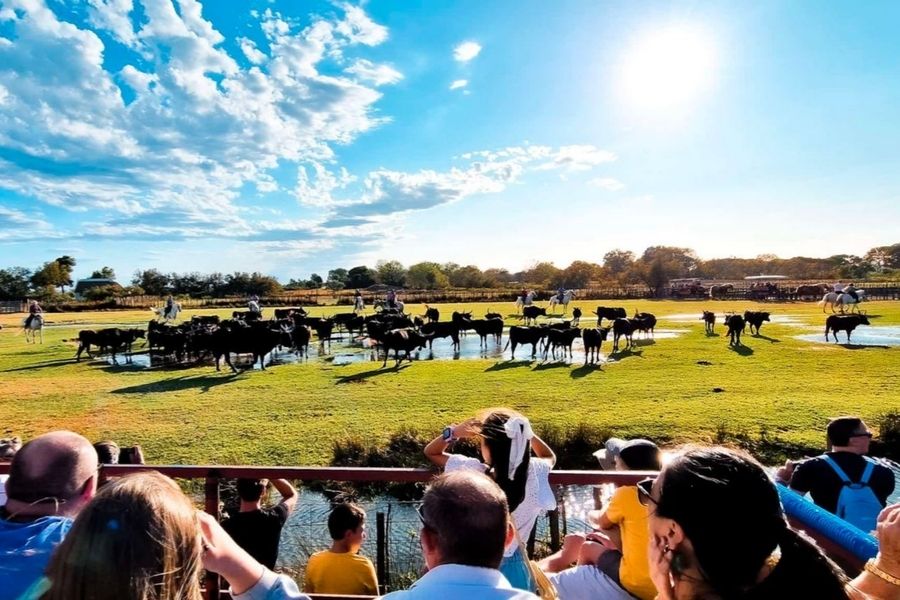
Despite their numbers, mosquitoes didn’t stop me from enjoying the Camargue’s wildlife: pink flamingos, wild white horses, and herds of black bulls. The constant biting can get distracting if you’re not ready, though. For families or anyone sensitive to bites, it’s smart to plan wildlife watching during less active hours or pick windy days—mosquitoes don’t fly much then.
My essentials for the Camargue:
- Long, light clothing
- Chemical or natural repellents
- Anti-itch cream
- Plan activities for midday when mosquitoes rest
Understanding Camargue’s Unique Ecosystem
The Camargue boasts rich wetlands, salt flats, and rice paddies—making it a paradise for birds, animals, and, unfortunately, mosquitoes.
It’s a tricky balance. Shallow water and warm summers make perfect breeding grounds for mosquitoes, but they also support rare species. After heavy rains, I noticed mosquito numbers spike. Efforts to control them, like spraying, have to be managed so they don’t hurt other animals.
Climate change is shaking things up, too. Warmer winters and sudden rainstorms can stretch the season or cause unpredictable booms. Locals told me they now check weather reports and flooding before planning outdoor events. The Camargue’s sensitivity means ecosystem shifts—like drained marshes or drought—quickly affect both wildlife and the mosquito population.
If you love wild places, you might appreciate the challenge mosquitoes bring. They’re part of a unique system, and honestly, I’d never want to see it ruined—even if it means packing extra bug spray for my next visit.
Wildlife Wonders: Why the Camargue Is Still Worth Visiting
If you love the natural world or want to spot animals in their real habitats, the Camargue stands out. Even with the infamous mosquitoes, I found the region offers wildlife viewing you just can’t get elsewhere in Europe.
Spotlight on Camargue’s Iconic Animals
One big reason I braved mosquito season was to see the famous white horses of the Camargue. These semi-wild horses graze in marshes or gallop through shallow water. Seeing a herd up close? That’s a moment I didn’t want to miss.
Flamingos are another highlight. I got mesmerized watching flocks of pink birds wade through salty lagoons, dipping their curved beaks for food. Birdwatchers bring binoculars for good reason—the diversity here is wild. Besides flamingos and horses, you’ll spot black bulls, herons, egrets, and tons of smaller birds.
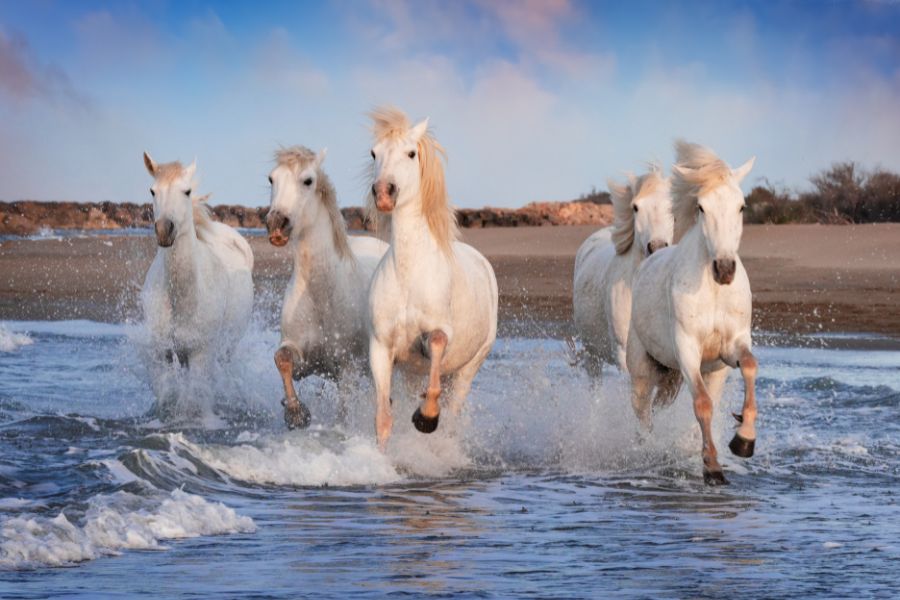
Being surrounded by all these animals, just living their lives in the open wetlands, made any mosquito bite seem like a small price. Watching horses at sunset or waking up to flocks of flamingos—those are memories that stick.
Wildlife Sanctuaries and Conservation Efforts
The Camargue isn’t just some random swamp. It’s a patchwork of protected areas. I visited Parc Naturel Régional de Camargue, which acts as both a wildlife sanctuary and a real-life conservation project. Rangers and local guides work hard to protect animals while welcoming visitors.
There are visitor centers, walking trails, and lookouts all over. These make it easy to enjoy the wildlife without messing up the habitats. I liked how some paths are raised over marshland, so you can get close views without trampling anything.
You’ll see organizations working to support biodiversity. Info boards and exhibits share stories about local species and how people help protect them. It felt good knowing my entrance fee and support as a visitor helped keep the ecosystem healthy for the future.
How Mosquitoes Interact With Local Wildlife
I realized pretty quickly that mosquitoes aren’t just a human annoyance. They’re a key piece of the Camargue ecosystem. Many birds, especially nestlings, count on mosquitoes and their larvae for food.
This really hit home when I watched swallows swoop over the water, snapping up insects at dusk. Those buzzing clouds I dreaded? They’re feeding entire families of birds and bats. Mosquitoes can spread disease to humans and animals, but that’s rare here, and most species have adapted.
Understanding this changed my view. Mosquitoes aren’t just pests—they help keep the food web alive, supporting the wildlife I came to see. Even if the bites sting, I left with more respect for how everything in the Camargue fits together.
Realities of Dealing With Mosquitoes: My Honest Experience
Mosquitoes in the Camargue can get relentless, especially at dusk and after rain. Being prepared made a big difference for me, but sometimes, I just had to be patient and adapt.
Common Inconveniences and How to Cope
Almost every evening, the buzzing started as the sun went down. Mosquitoes didn’t just stay outside—they snuck into my hotel room if I opened a window. I got bitten a lot my first day, even though I thought I’d been careful.
Repellent became essential. I learned to use it generously, especially on my ankles and behind my ears. Loose, long sleeves and pants also helped keep bites to a minimum.
- Strong mosquito repellent (reapplied often)
- Lightweight long clothing
- Sleeping under a mosquito net when possible
- Avoiding marshes at dawn and dusk
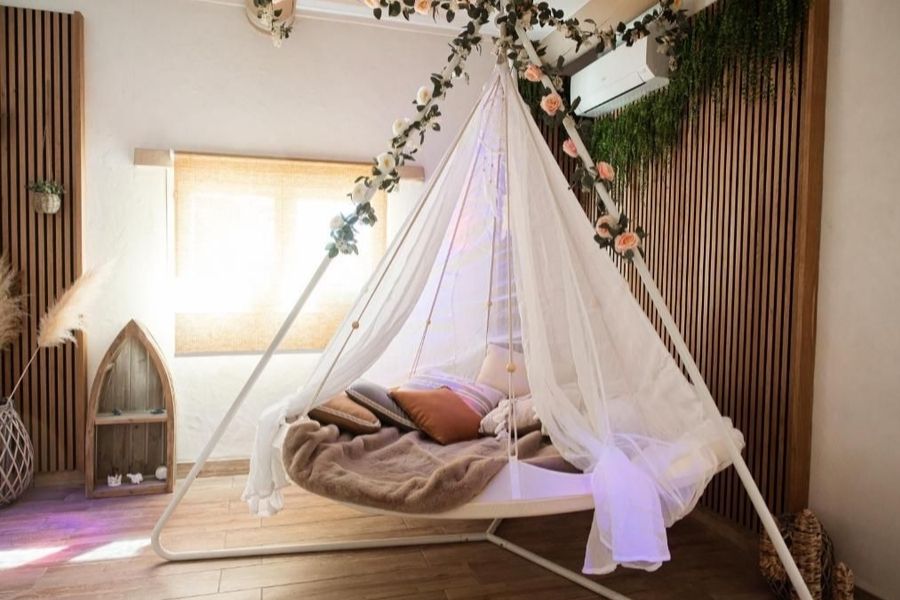
It got itchy and annoying sometimes, but the right gear and a steady routine made it manageable. Having antihistamine cream on hand was a small but important comfort after bites.
Lessons in Patience and Resilience
It took real patience not to let the irritation ruin my time. Some evenings, the only way to enjoy watching flamingos or wild horses was to accept a few bites and just focus on the wildlife. I kept reminding myself why I came to the Camargue and tried not to let small annoyances take over.
Eventually, it got easier. I planned activities for times when mosquitoes were less active and took breaks inside cool buildings to recover. Frustrating? Sure. But those small adjustments made the trip much more manageable.
Building patience became part of daily life. Swapping stories with other travelers or laughing off a few itchy spots helped me stay positive and present for the moments that really mattered.
Proven Tips for Surviving Mosquito Season in the Camargue
Mosquitoes are everywhere in the Camargue, especially in summer and autumn. With a few smart choices and the right gear, I found I could avoid most bites and still enjoy the region’s wildlife.
Essential Gear and Protective Measures
The right gear made all the difference for me. I packed insect repellent with DEET or picaridin—those work best here. I kept two small bottles, one in my day bag and one in the car, so I was always ready after a walk or a trip to the marshes.
Long-sleeved shirts and lightweight pants became my go-to. Dark colors seemed to attract mosquitoes, so I stuck with light colors. A wide-brimmed hat also helped keep bugs off my face and neck.

At night, I slept under a mosquito net whenever I could. Most hotels had netting or screens, but I brought a travel net just in case.
| Item | Why It’s Useful |
|---|---|
| Repellent (DEET/picaridin) | Most effective protection |
| Light long-sleeved clothing | Covers skin; keeps bugs off |
| Travel mosquito net | Extra layer, especially in rentals |
| Sunglasses & hat | Keeps mosquitoes from your face |
Choosing the Right Accommodation and Location
Where you stay matters. I noticed that hotels and guesthouses in well-kept areas had way fewer mosquitoes than those close to marshes or standing water. I avoided cabins and rentals right next to ponds or rice fields—those spots are mosquito central.
When I booked, I checked for mosquito screens on the windows. Some places list this as a feature online. Reviews that mentioned mosquitoes helped me narrow down my options.
Staying in the heart of a village or farther from the main wetlands gave me a break from the worst bugs. It’s worth paying a bit more for a good night’s sleep and fewer bites.
Daily Routines and Habits for Minimizing Risk
Mosquitoes have a daily rhythm. I planned outdoor activities away from dawn and dusk—those are the worst times for bites. Midday is calmer, and exploring the flamingo ponds with the sun high worked out much better for me.
Every day, I wore long clothes and reapplied repellent, especially after swimming or sweating. I made it a habit to check my room for open windows or tiny gaps before evening. I even carried a small plug-in mosquito repellant for peace of mind at night.
I avoided sitting near standing water during meals, picking indoor or well-shaded outdoor spots with fans. These simple routines made traveling during mosquito season so much easier.
Health and Wellbeing Considerations
Taking care of myself mattered as much as seeing the sights. After a few bad bites early on, I kept anti-itch cream and antihistamine tablets in my kit—the relief was instant and helped me sleep.
Staying hydrated and treating itchy bites lowered the risk of infection. If you have allergies, pack your own meds. Having plasters and after-bite sticks meant I didn’t need to hunt for a pharmacy in a tiny village.
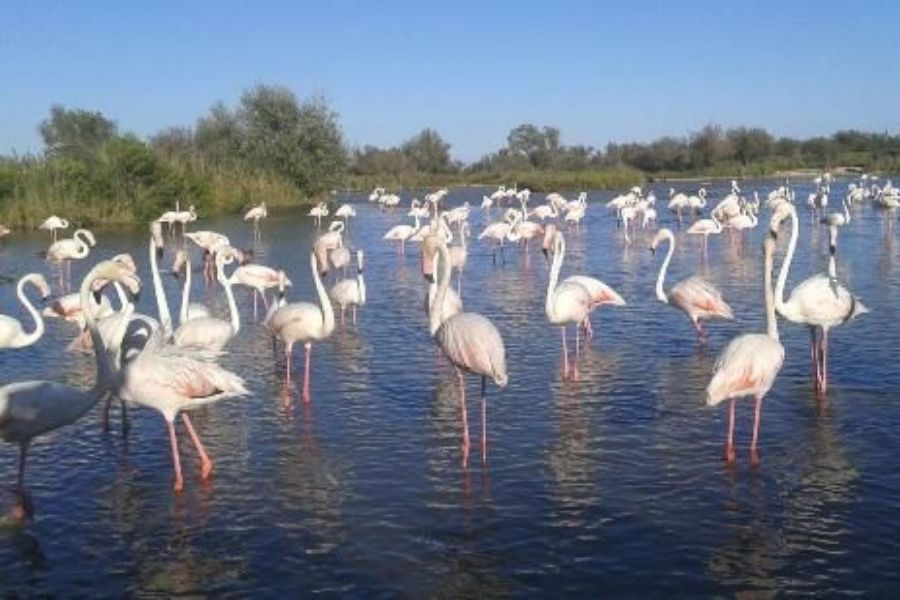
I swapped these tips with other travelers at my guesthouse, and good advice really changed the way we experienced the Camargue. Being ready let me focus on the wild horses, birds, and the beauty of the wetlands, not just the itch.
Planning Your Trip: Logistics and Responsible Travel
Every detail counts when planning a Camargue trip, from timing your wildlife watching to making eco-friendly choices. How you travel and support the local community really shapes your experience.
Best Time to Visit for Wildlife and Fewer Mosquitoes
Timing a trip here really matters. The Camargue bursts with birds and wild horses in spring and early fall.
Summer? It gets rough—mosquitoes swarm and the heat can feel relentless.
After talking to locals and digging through forums, I figured late September hits the sweet spot. By then, evenings cool down and mosquitoes start to disappear, but flamingos and other wildlife still hang around.
Most people I met swore off mid-summer if you’re sensitive to bites. Hot, humid days just invite swarms. Definitely pack a solid repellent and wear light, long sleeves.
Here’s a quick reference:
| Month | Mosquito Risk | Wildlife Activity | Comfort Level |
|---|---|---|---|
| May–June | Moderate | High | Pleasant |
| July–August | High | High | Hot/Sticky |
| September | Lower | Moderate/High | Comfortable |
| October–April | Low | Moderate | Cooler |
Responsible Tourism and Local Governance
Traveling responsibly in the Camargue means showing some respect—for nature and for the people who call this place home.
Local governance protects the region as part of the Parc Naturel Régional de Camargue. They control development and keep wildlife safe.
I stick to marked trails and steer clear of nesting spots or gardens. Locals appreciate that, trust me.
Supporting family-run restaurants and guesthouses feels good and helps the community. People here often remind visitors to bring reusable water bottles and skip single-use plastics.
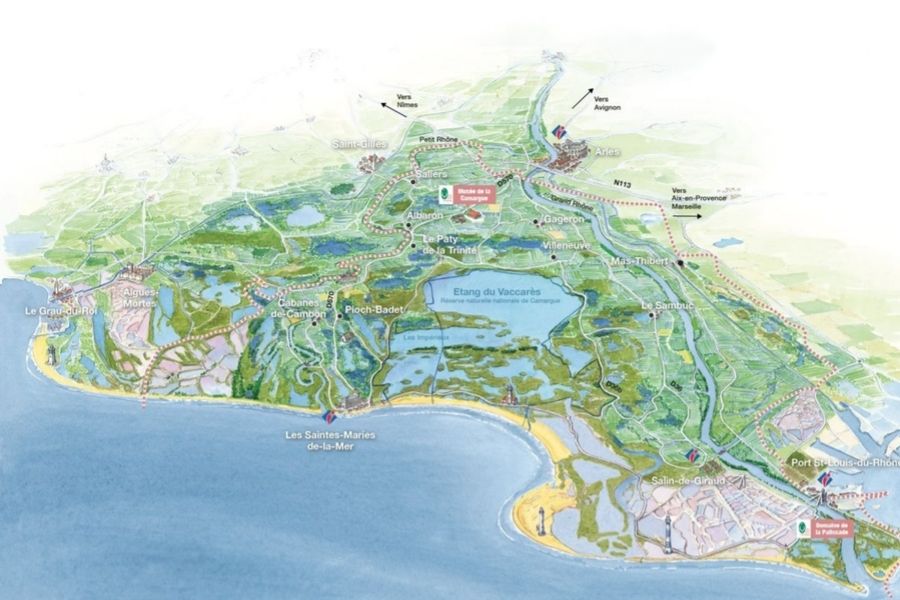
Honestly, after traveling in the US—California, New York, you name it—I’ve seen how much responsible tourism matters. It really does help keep special places like this around for the next wave of travelers.
Transport and Access Tips
Getting to the Camargue isn’t too tricky if you plan just a little. I usually fly into Marseille or Montpellier—both cities make it pretty easy to hop on a train to Arles, which feels like the main entry point.
Once in Arles, I grab a rental car or join a guided tour. Public transport inside the Camargue? It’s honestly not great.
I noticed the local routes are usually well marked, though I’ve relied on GPS for those smaller, winding roads. Parking near reserves is often free, but if you’re coming during a summer weekend, spaces can disappear fast.
Exploring by car gives you a lot of freedom, but I love switching to walking or biking once I’m inside the reserve. Walking helps me spot wildlife up close—without scaring them off.
Visitor centers around here rent out bikes and hand out updated trail maps. That way, I always feel like I know the best routes to take.

